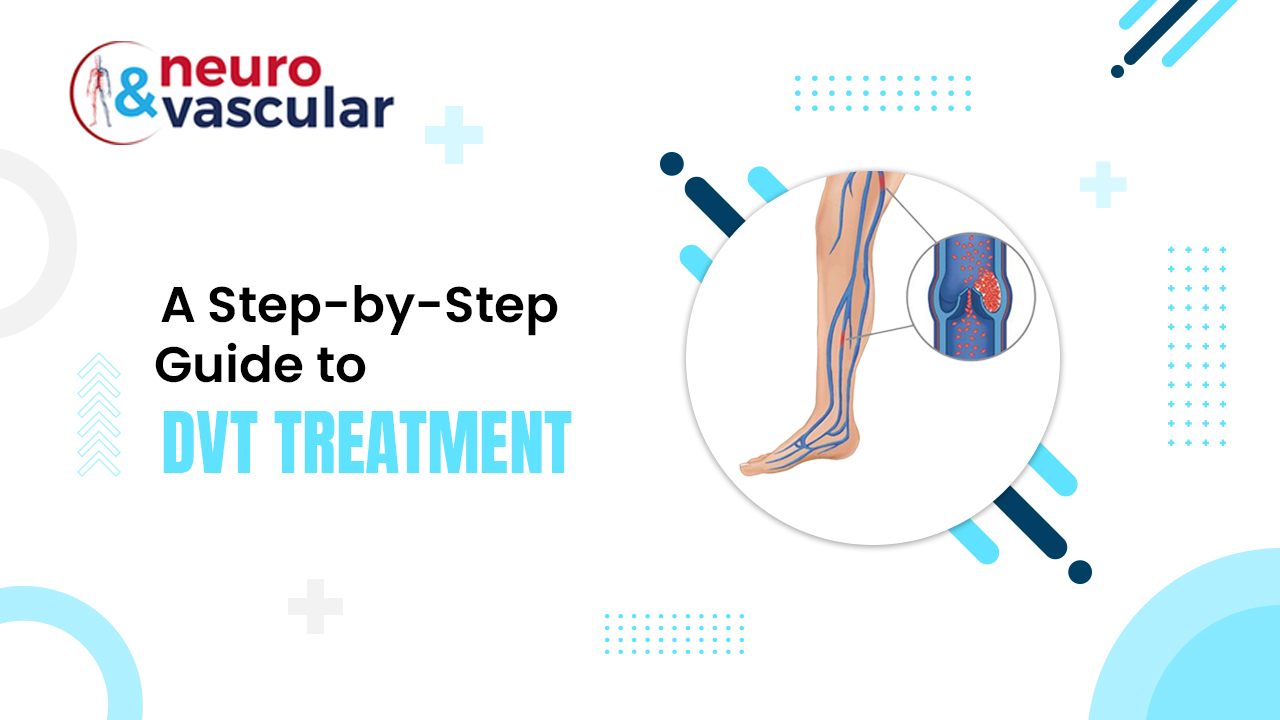
A Step-by-Step Guide to DVT Treatment

Deep vein thrombosis (DVT) happens when a blood clot forms in a deep vein in your legs (or sometimes, arms or other veins). It can cause serious problems if left untreated. It can lead to pulmonary embolism (PE), Which is when the blood clot breaks free and travels to your lungs, causing a blockage. You can avoid the serious consequences of DVT by DVT treatment in Hyderabad. These include medication, compression stockings, and surgery. Based on your condition, you could need to consume medication for a few weeks or put on compression stockings for two years. Don’t underestimate the life-threatening nature of DVT and PE – they make up the deadly condition known as Venous Thromboembolism (VTE).
Understanding the Risks and Symptoms of DVT.
While DVT may not be life-threatening, blood clots can break free and travel through your bloodstream, causing potentially fatal pulmonary embolisms. Seeking quick diagnosis and treatment is crucial in preventing this outcome. The symptoms developed after DVT are called post-thrombotic syndromes. The symptoms are chronic leg swelling and pain, which may last years. This occurs due to damage to the valves and inner lining of your veins, which can cause blood to “pool” and increase pressure, leading to skin discolouration and leg ulcers.
The Prevalence of Deep Vein Thrombosis
DVT is the third most common vascular disease in the world. While acute DVT can affect any age group, it is most visible in patients over 60 years aged and less common among teenagers and children. Surprisingly, more than half of DVT cases arise from hospital stays triggered by illnesses or surgeries. Patients spend prolonged periods lying immobile in bed, a deviation from their normal routine.
What’s the Best Way to Diagnose Deep Vein Thrombosis (DVT)?
- Ultrasound is the most common test used to detect DVT. It measures blood flow in the veins and identifies any clots that may be blocking circulation. A series of ultrasounds may be conducted over several days to monitor potential clot growth or detect new clots.
- Additional diagnostic tools include blood testing, which reveals elevated D-dimer levels in most patients with severe DVT.
- CT or MRI scans may uncover hidden symptoms that X-rays miss.
The treatment procedure for DVT.
Two types of DVT are there, such as acute and chronic. Each requires specific treatment based on clot size and duration.
Acute DVT treatment:
The size and duration of the clot will determine the best course of treatment for acute DVT.
-
Medication:
A blood-thinning medication like heparin or warfarin is the standard of care. While effective at preventing clot travel to the lungs, these medications can take months to dissolve and block the vein.
-
IVC filter
In some cases, an IVC filter may be implanted in the inferior vena cava as an alternative.
-
Catheter directed thrombolysis and mechanical thrombectomy
DVT thrombolysis and mechanical thrombectomy a minimally-invasive procedure, can also remove the clot and treat narrowed veins with angioplasty or stent insertion. While slight risks are involved, patients with acute clots (10 days or less of symptoms) typically recover faster with a reduced risk of Post Thrombotic Syndrome.
Chronic DVT and Post Thrombotic Syndrome (PTS) treatment procedure
Experience renewed hope with advanced techniques for treating Post Thrombotic Syndrome caused by chronic DVT. Some patients have suffered from clots for months to years or still experience symptoms. Angioplasty and stents can open blocked veins and transform their quality of life. Now, patients can get benefits from the expertise and cutting-edge technology that previously was not available.
What will be the recovery period after DVT treatment?
Most patients can return to their normal routine right after leaving the hospital. While some patients may experience tenderness and mild bruising behind their knees or in the hip region, depending on the entry point(s) used during the procedure, you’ll be up and moving in no time.
Preparing for Your DVT Procedure: What You Need to Know
If you’re scheduled for a DVT procedure, it’s natural to have questions about how to prepare. Below are some important points that you should remember:
-
Eating and Drinking:
You’ll need to fast starting at midnight the night before your procedure. This means you will not be allowed to take even water.
-
Medications:
Generally, taking routine medications with water before the procedure is safe. However, if you’re taking antiplatelet medications or any blood thinners, you must discuss them with your physician. Depending on your case, these medications may need to be stopped before the procedure.
-
Compression Stockings:
Bring your compression stockings to the procedure with you.
Conclusion
During your consultation, your Interventional Radiologist will give you more detailed information and instructions about preparing for your DVT procedure. This may include whether or not to take your anticoagulation medication the morning of the procedure. Several treatment options are there. According to your symptoms, your healthcare professional can customize your treatment plan. But you should follow up regularly with taking proper medicine on time. With the right preparation and information, you can feel confident and ready for your DVT procedure.
About the Author:

Name: DR . SURESH GIRAGANI
INTERVENTIONAL RADIOLOGIST
DR. SURESH GIRAGANI CONSULTANT INTERVENTIONAL RADIOLOGIST at Apollo hospitals Jubilee Hills, has more than sixteen years of clinical experience in vascular interventions with a special interest in neurovascular and peripheral vascular disease interventional procedures.